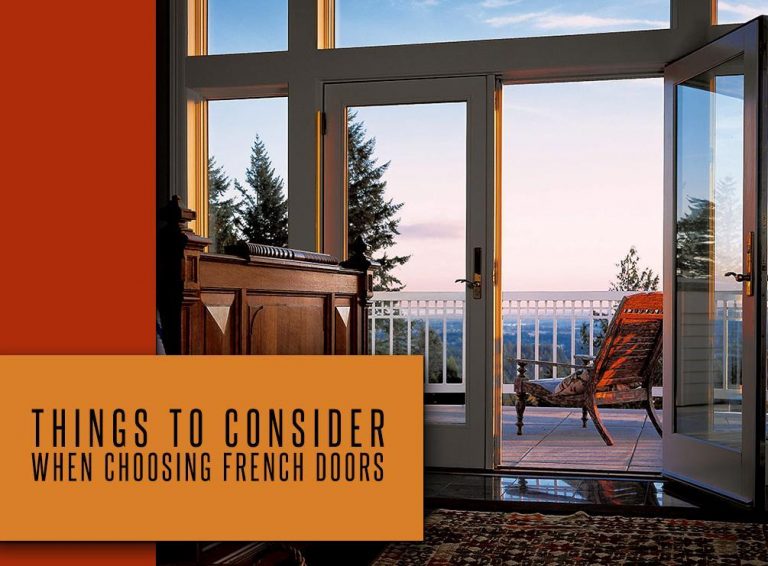MENU


As its name implies, French doors originated in France in the 17th century. Their earliest form was that of a single-pane, floor-length window. This design choice changed over the years as the architectural fashion of the time, coupled with advances in technology, and increased availability of glass led to the idea of making an entire door out of window glass.
Like most architectural styles and features, current French doors have become more elaborate. Several styles exist and are popular today, which are best suited to different functions. Most are used either as entry patio doors or as interior doors that separate two spaces in the same room.
With the many styles and functions available, there are some things to consider when choosing French doors. Detailed below are some.
1. Material
Besides wood, French doors are likewise available in fiberglass, aluminum, or even steel. Some French doors are even made of wood but covered with vinyl or aluminum. Each choice obviously has different benefits and caters to different styles and tastes.
Of these types, uPVC-made French doors are thermally efficient and weather-resistant while aluminum frames are best suited for exterior use because of their rust-resistant properties. Timber, meanwhile, is the traditional material for sliding patio doors, though reinforced with hardwood and steel.
2. Glass
The glass used in exterior doors are used for much more than providing a visual link to the outdoors. This glass also functions as a layer of insulation while at the same time reduces noise from the outside. Some even have an opacity filter to allow for some degree of privacy. Glass panes available today reduce heat loss and are generally more energy-efficient.
3. Which Way to Open?
Depending on where the French doors will be placed, consider the direction of their swing. Most homeowners generally choose for their doors to open outward as this takes up less interior space. In the case of bad weather, however, it would be wise to have some sort of overhang. If there’s plenty of interior space, an inward-opening French door is generally a good idea.
4. Installation
The most crucial part of French door installation is measuring the radius of the swing. Make sure there are no furnishings within the door’s path. To avoid warping, the French door should be squarely placed in the wall, where a multipoint locking system can be placed for added security.
French doors are the punctuation to a well-designed home. To learn how we can make French doors to suit your home, call us at (866) 609-5033. We serve Hillsborough, New Jersey.